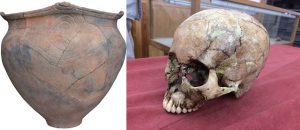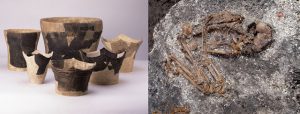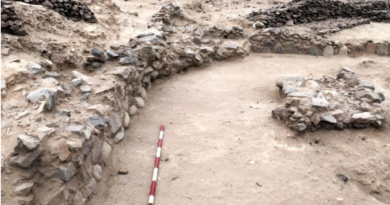Ancient DNA Rewrites Early Japanese History—Modern Day Populations Have Tripartite Genetic Origin
An ancient DNA recovered from human bones rewrote early Japanese history by emphasising the tripartite genetic origins of current Japanese populations – a result that refines previously recognised perspectives on double genomic ancestry.
The genetic imprint of early indigenous Jomon-hunter-gatherer-fishermen Jomon and Yayoi-fisher immigrant peasants does indicate that 12 newly-sequenced old Japanese genomes — but also a threat genetic component connected to Kofun, whose cultures expanded in Japan from the third- to seventh centuries.
Rapid cultural transformations
The Japanese archipelago has occupied people for at least 38,000 years, but only in the last 3,000 years, Japan underwent significant transitions from foraging to wet-rice and finally to technical imperial development.
The previous longstanding hypothesis has shown that continental Japanese populations come from the Indian Jomon hunting-collecting-fishers from around 16,000 to 3,000 years ago and then farmers of Yayoi from the Asian continent, who lived in Japan from approximately 900 BC to AD 300. In Japan, they had been migrated from the Asiatic continent and they lived.
The 12 newly sequenced Japanese genomes — from the pre-farming and post-farming peoples’ bodies — also indicate a later infusion of East Asian ancestry during the imperial Kofun era, which rose in Japan from 300 to 700 A.D.
Shigeki Nakagome, Assistant Professor of Psychiatry at the Dublin School of Medicine Trinity College, was responsible for leading the research that brought together an interdisciplinary team of Japanese and Ireland academics. Nakagome Professor said:
“The Jomon, Yayoi and Kofun civilizations were more and more learnt as more and more old artefacts appeared but we understood very little about the genesis and impact of the agrarian shift and the subsequent state-building era before our research.”
“We know now that its ancestors have made an important contribution to the creation of Japanese peoples in every step of the foraging, agricultural and state formation. In short, we have a completely new tripartite model with Japanese genetic roots – not an important dual model.”
[adinserter block=”5″]
Genomic insights into key Japanese transformations
In addition to the overall find, analyses have also shown that Jomon has maintained a small effective population size of around 1,000 over several thousand years, with a large discrepancy between continental populations from 20,000 to 15,000 years ago—a period in which Japan became geographically more insular by increasing sea levels.

As shown in the Neolithic transition in much of Europe, agricultural spreads are frequently defined by population replacement, with little inputs from hunter-gatherer populations seen in many places. However, genetic evidence was established indicating, during the agricultural transition in prehistoric Japan, the assimilation process was not a replacement, and the indigenous Jomon and new migrants participating in wet rice-growing had almost the same genetic contribution.

“In view of its remarkable pre-history of long-standing continuity and fast cultural alterations, the Japanese archipelago is particularly fascinating in the globe for studying with a period of ancient samples. Again, our insights into the complexity of modern Japanese origins reveal the strength of old genomics to reveal new information that could not otherwise be seen about prehistory “The Professor of Population Genetics, Dan Bradley, added who co-led the project to the Trinity School of Genetics and Microbiology.




